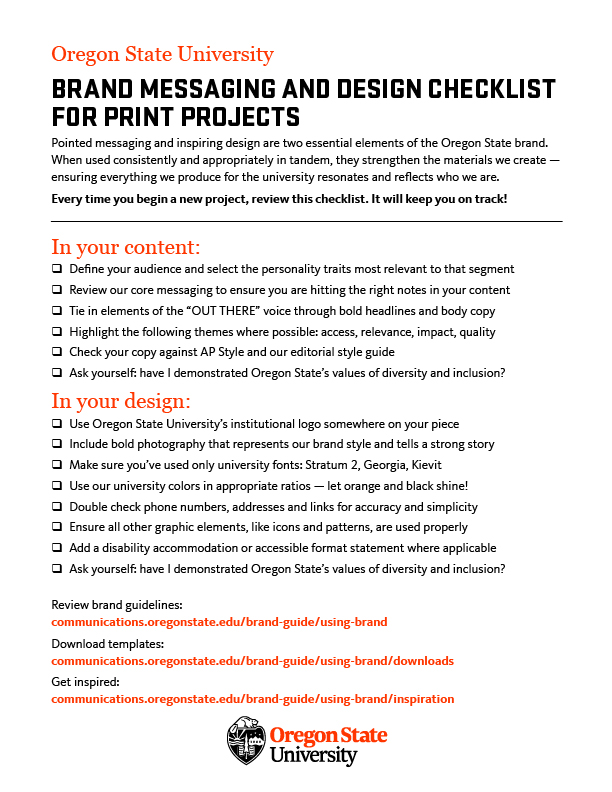We have made the editorial style decision to capitalize the word Indigenous when referring to Indigenous people. This is consistent with other racial and ethnic identities, including African American, Asian American, Pacific Islander, Latina/Latino/Latinx, Hispanic and Native American. We updated the editorial style section of the Oregon State Brand Guidelines accordingly.
Although this is a break with current AP style, the question of capitalizing Indigenous has been brought up in the Ask the Editor section of the Associated Press Stylebook online. The New York Times and international news organizations including the BBC and The Guardian are now capitalizing Indigenous, and the editors at AP may change their minds. As we all know, the AP updates the stylebook all the time. Some of us are still adjusting the using the % sign.
Our thanks to Luhui Whitebear, assistant director of the Native American Longhouse Eena Haws. In addition to bringing this to our attention, she provided an explanation for why Indigenous should be capitalized from the Diversity Style Guide, and we agree. A project of the Center for Integration and Improvement of Journalism at San Francisco State University, the Diversity Style Guide also has support from the Society of Professional Journalists.
